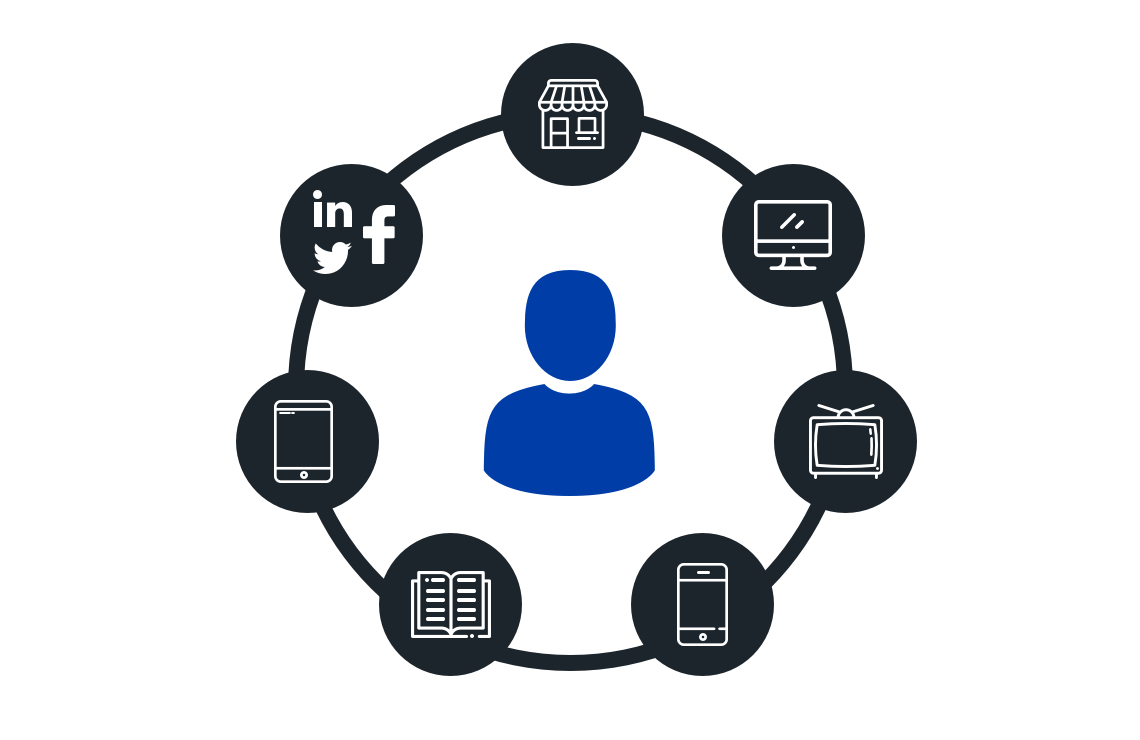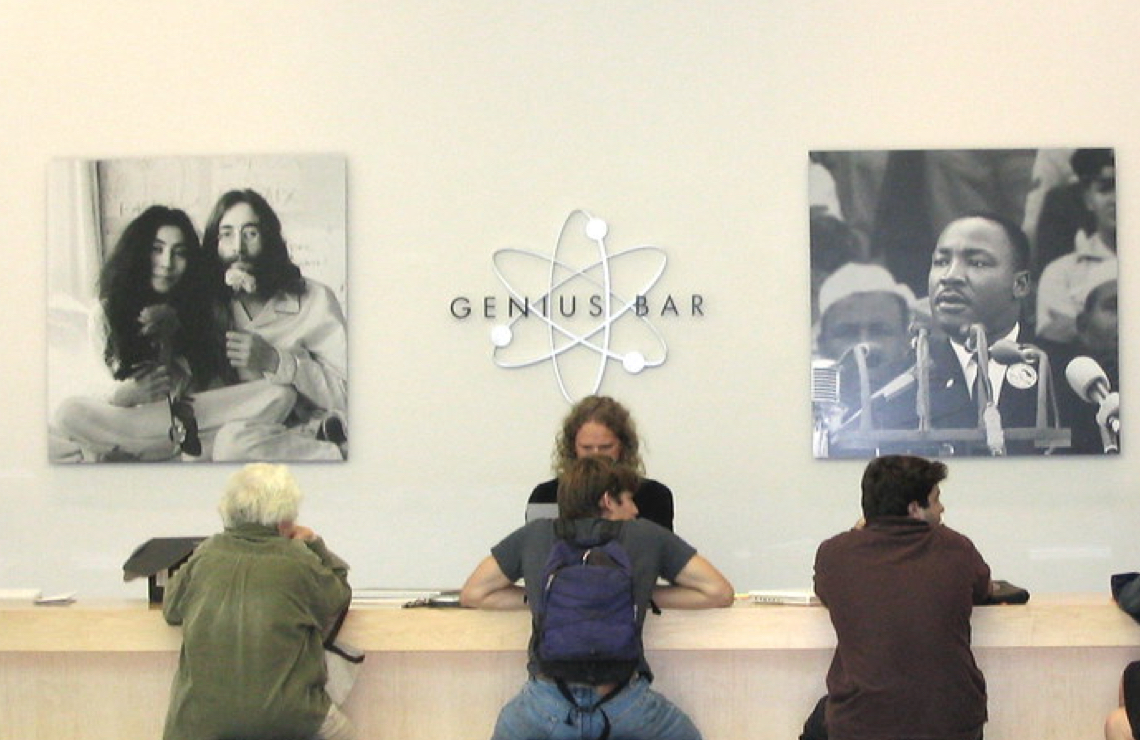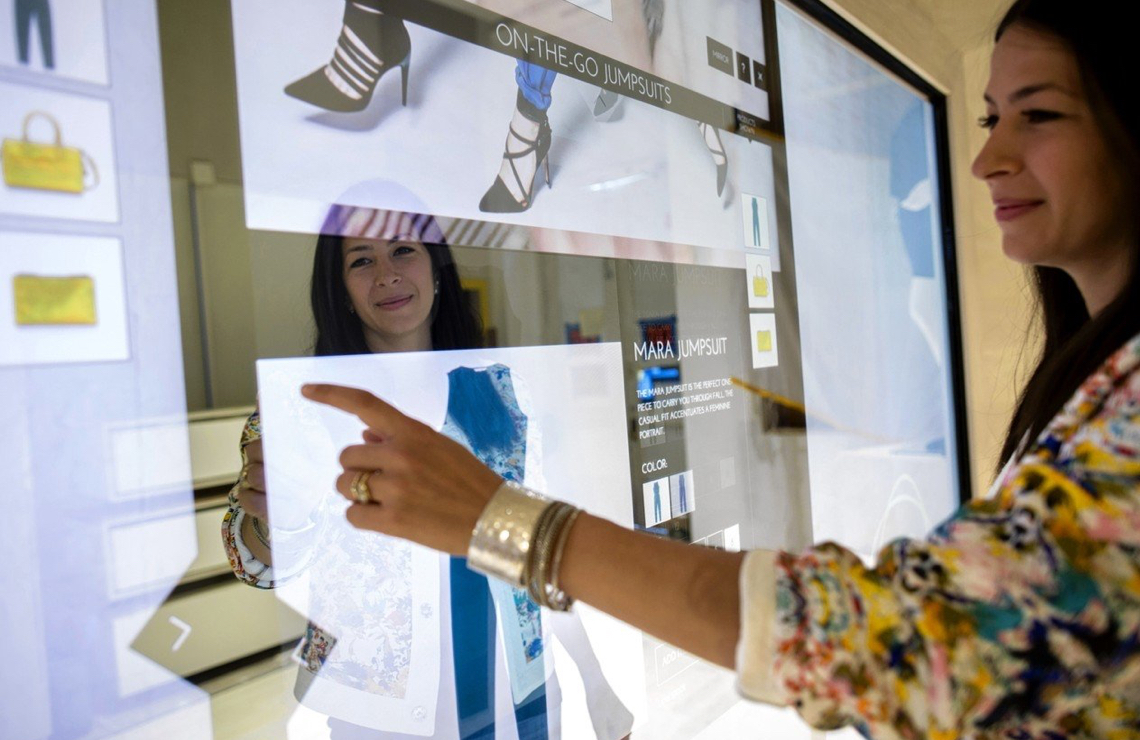How to Succeed in Omnichannel Retail: Tips, Tricks, and Examples
By now, you may have already heard of the term – omnichannel retail.
To revise, the omnichannel approach is a type of approach to sales where the focus is on providing a holistic and integrated customer experience.
The general assumption that omnichannel operations work under is that most customers will use several channels to engage with a brand before making a purchasing decision. This way, organizations can offer a unified customer experience, regardless of the channel being used.
Essentially, the omnichannel approach focuses on the entire customer experience – not only individual experiences on various channels.
To provide your customers with a unified experience, go omnichannel! Reach out to us and ask us about Pimcore development and why is it the optimal solution for omnichannel businesses.
We have already mentioned several successful examples of choosing Pimcore as your eCommerce solution and how companies like IKEA and Audi manage their omnichannel businesses.
There are many benefits of having an omnichannel business so – let’s dive in!
Omnichannel retail – how does it work?

In one of their articles, Entrepreneur reports that 51% of Americans prefer online shopping, while 49% prefer shopping in-store. To get the most out of this situation, brands and retailers need to provide their customers with a branded and user-friendly shopping experience that will enable them to seamlessly switch between online and offline channels?
But how to achieve this?
Your audience may differ from channel to channel, but it’s important to provide a consistent and unified brand experience. Your brand voice, tone, and design should be consistent across all channels so that customers can recognize your brand when they see it in different places and on different platforms.
The most essential thing you need to do is – be everywhere! Reside on every channel, provide your customers with the branded, uniformed experience and get to know them. To improve your eCommerce business level, we have singled out 10 eCommerce blogs you should follow and some more tips on the newest eCommerce trends like voice search!
We’ll show you several successful examples of omnichannel businesses so that you can get an idea of what omnichannel really is.
So, without any further ado – let’s dive in!
Living examples of omnichannel companies
There is a huge number of companies that already transformed into omnichannel businesses. They have experienced many benefits, which we already mentioned previously in our blog posts.
In that spirit, let’s just quickly outline what are the benefits they gained from transforming into omnichannel business:
- Brand consistency – Hosting an omnichannel experience means ensuring the customer’s experience with your brand is similar no matter what channel they pursue. A customer visiting your retail location to return a product will experience the same brand voice and the same attention to detail as if they are sending an inquiry via email.

- Real options for consumers – Many customers feel trapped once they choose a channel; they see the online world and physical retail world as inherently separate. Creating an omnichannel environment breaks those barriers between the online and offline retail world by providing consumers with more options for interacting with the company.

- Customer focus – Multichannel approaches tend to focus on building more infrastructure and creating more opportunities for the business. Omnichannel approach, on the other hand, focuses on making the customer experience as easy as possible. Omnichannel involves using data to locate the effort in customer experience and to understand how to remove it. The goal is to create an effortless and convenient shopping experience.

Benefits gained from transforming a business into an omnichannel one are a force to be reckoned with. Many of those businesses chose Pimcore as their platform – for instance after T-com went live with Pimcore, traffic skyrocketed – nearly 340 000 unique users visited the website. Mobile users generated almost half of the total traffic!
But let’s dig deeper and find out how retailers managed to find their way in omnichannel!
Apple – transformation to omnichannel
Apple made an impactful change to the retail store Genius Bar appointments to improve the customer experience overall. A few years ago, in 2015, they launched a new initiative called “The new Concierge” that later replaced the traditional walk-in Genius Bar appointments.
At the time, a customer seeking assistance could walk into an Apple Retail Store, explaining the issue to an assistant and get a specific time to return for an appointment.

This new program moved Apple away from the classic appointment model. Instead, a customer describes the problem to an Apple Store employee, who places all the data into an iPad application. With the help of a special algorithm, the application provides the customer with a wait time based on the priority of the issue.
For instance, a customer seeking a screen replacement on the iPhone will be higher placed in the queue than a customer with a minor iCloud issue.
First, the customer must provide the Apple assistant with a phone number, which Apple will later use to send three text messages:
- A text message confirming the request and providing the customer with the estimated wait time
- A text message telling the customer to start heading back to the Apple Store
- A final text message informing the customer that they are first in the queue and that their technician is ready to help and also where they can be located in the store
Many Apple employees call this feature one of the most significant changes to Apple Store operations in several years. It allows customers to request support on spot, to spend their time either in Apple Store or elsewhere inside the mall, and head back to Apple Store when the technician is ready to help.
Today, Apple Stores operate fundamentally like restaurants that provide diners with pagers and wait times instead of holding empty tables while the customers are waiting.
Nevertheless, with the SMS-based system, realtime feedback and the level of interaction – there will be no need for additional hardware.
This is one of the examples of how Apple transformed into an omnichannel business.
They have placed their focus on the customer and the rest is history – they are now one of the most successful companies in the world.
Is that the result of a transformation to the omnichannel business? Definitely.
Of course, that’s not the only factor in their success, but it’s one of the things that made it all possible.
Carrefour – transformation to omnichannel
Let’s dive even deeper into the sphere of omnichannel.
Carrefour – a french retail giant did an impressive job in this field. We’ll point out the Connected Kitchen concept. It’s a wonderful device allowing customers to order supplies they need right from their kitchens.
It allows users to scan items in their kitchen which they can then use to order online to be shipped or to be picked up at a local store. When scanning items, similar products from Carrefour are automatically suggested.
Also, the Connected Kitchen is voice-enabled, meaning that customers can either scan the items or order them using their voice. This way, customers stay on top of their supplies and never run out of them, as they can shop even before the supplies are consumed.
To continue on, we’ll point out some of the benefits of using Connected Kitchen:
- Time savings
- Instant transmission of information
- Ease of use
- Simplification of the online ordering process
With Connected Kitchen, customers have no need to take out their mobile phone, go to the right application and highlight which products they want to buy. For instance, it’s also possible to automatically recover, in their shopping list, all the necessary ingredients to recreate a previously selected recipe.
So, what did Carrefour do? They focused on the customer!
They provided customers with several options – making their shopping experience effortless and more comfortable. Customers have the freedom to choose how will they interact with the company and they are given the same experience across all channels.
A perfect example of excellent omnichannel retail!
But let’s go even deeper into omnichannel.
Rebecca Minkoff – transformation to omnichannel

New York-based luxury fashion retailer Rebecca Minkoff has created an interactive store at its flagship location in SoHo.
Their retail store looks incredible. CEO himself has a strong software development background so it’s no surprise they were the first when it comes to creating an interactive store in the fashion industry.
It represents a highly digital and seamlessly connected experience that brings the best of the online world into the physical.
The connected wall, a large mirror display, shows the latest Rebecca Minkoff brand content, runway shows, photos, and anything happening on the social channels.
It’s possible to interact with the mirror to browse the latest fashion – customers can easily find any product they like and even request a fitting room.
Also, it’s possible to order drinks and download the mobile app directly from the mirror. By interacting with the wall, the customer can initiate a one-on-one stylist session and when the room is ready – the customer is notified via text message.
The fitting room stands for the next part of the omnichannel experience. While entering the fitting room, any clothes that customer brings in additionally are automatically recognized, due to the RFID tags. In the meantime, all requested clothing is waiting for the customer in the fitting room.
The room is highly interactive – it’s possible to change the lighting in the room, change the size, cut or color of the article by merely touching the mirror. One of the features includes attaching every item on the customer’s personal profile which enables customers to see what they have tried on or bought and they can receive intelligent recommendations.
After confirming the purchase, the customer receives a digital receipt.
An incredible example of an omnichannel retail business. The business model is completely customer-oriented and it’s working amazingly. Customers have a vast range of options while browsing through the store and receiving direct assistance from the representative.
The store serves as a connection point for all channels – it’s a true definition of an omnichannel retail business.
The benefits of RFID are not that often discussed in this field particularly. Typically, RFID is mentioned in communication regarding inventory accuracy and supply chain management.
This time, RFID played a key role in engaging the shopper directly and paved a new way to more investments in the technology.
These digital transformations and technological innovations are what make the leaders on the market today. Consumers are not loyal to brands – they are loyal to experiences.
To win, you have to do one thing – provide them with an unforgettable experience!
How to digitally transform your company?
There are many misconceptions about transforming your company into a digital one. We’re going to name some of them and give you some further explanation.
<[book id='10885']>
Let’s dig in!
Technology is the key element of digital transformation
Yes. We agree. Technology indeed is a key element of digital transformation. However, real digital companies have already realized that the people and the organizational structure and culture are the differential elements of successful digital transformation.
Take note – focus on your people and company culture, it’s more important than technology in the process of digital transformation!
It’s not so important for B2B companies, it’s more oriented to B2C companies
On this one, we do not agree. There are many examples of huge companies (for instance, General Electric) and companies in industrial sectors with marvelous strategies underway for digital transformation.
They have already realized the great opportunity that is open for the winners in this revolution.
B2C companies have already instilled strategies concerning digital transformation, but the time of B2B is coming and the winners are already reaping the rewards.
Digital transformation is expensive
Okay, it is expensive if you’re looking at your business short-term. To completely transform your company, there is a certain amount of funds needed. On the other hand, if you’re looking for long-term success, digital transformation is one of the best investments you can make. It will enable you to generate more leads, more sales, more important contacts, etc.
It’s definitely worth to transform your company. Maybe not worth to transform, it’s almost necessary. In the world of the future, we’ll see less and less business functioning non-digitally and they will most probably seem like remnants of the past times.
Throughout the period of 3-5 years, you could see your business thrive, only by digitally transforming it.
Digital transformation involves new processes and relationships with external customers
Long ago, Peter Drucker said, “culture eats the strategy for breakfast”. Throughout time, that thesis has proven to be true. There is more and more business evidence that good employee experience is the basis for excellent and profitable customer experience.
For that reason, before modifying the processes, it’s crucial to focus on good management of the team’s change. It’s important to maintain the positive essence that led the business to this point and evolve the mentality to remain competitive. With the involvement of employees, there is a potential for business to become more solid and sustainable.
Additionally, you may want to rethink your product management strategies and considering using product information management (PIM) system!
How can we help you?
By now, you can already see the many benefits of digitally transforming your business.
We have a long record of digitally transforming our clients’ businesses and helping them impact the market in their preferred ways. If you would like to digitize your business – you’re in the right place!
We are highly efficient in Pimcore development, which we have been doing for quite some time. Pimcore enables you access to all data in one central place, automatically transforms your digital media assets and includes automated marketing actions.
In one of our previous posts, we have compared Pimcore vs. WordPress and if you take a more in-depth look into the comparison, you’ll see what we’re talking about.
If you want to give your customers an incredible omnichannel experience and join the leaders of today’s’ market – contact us!






